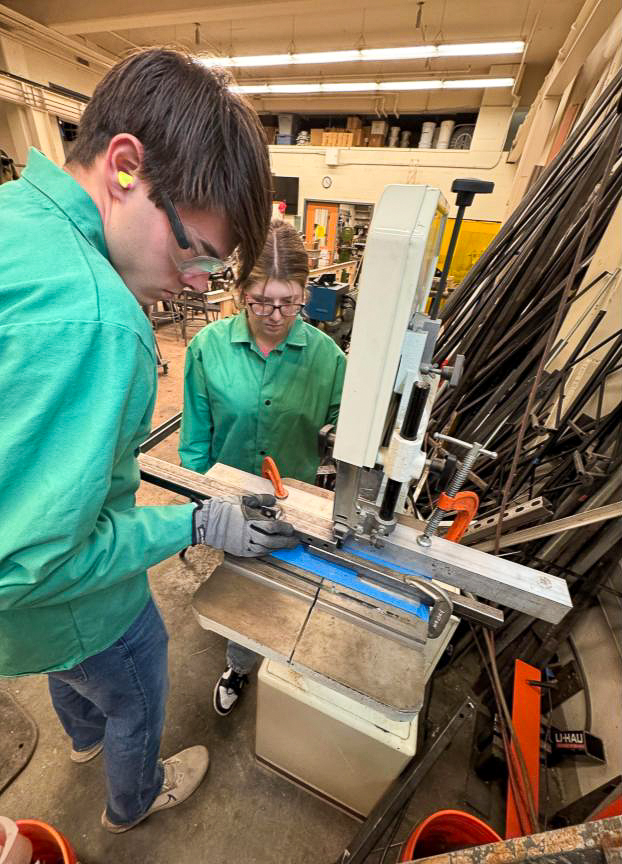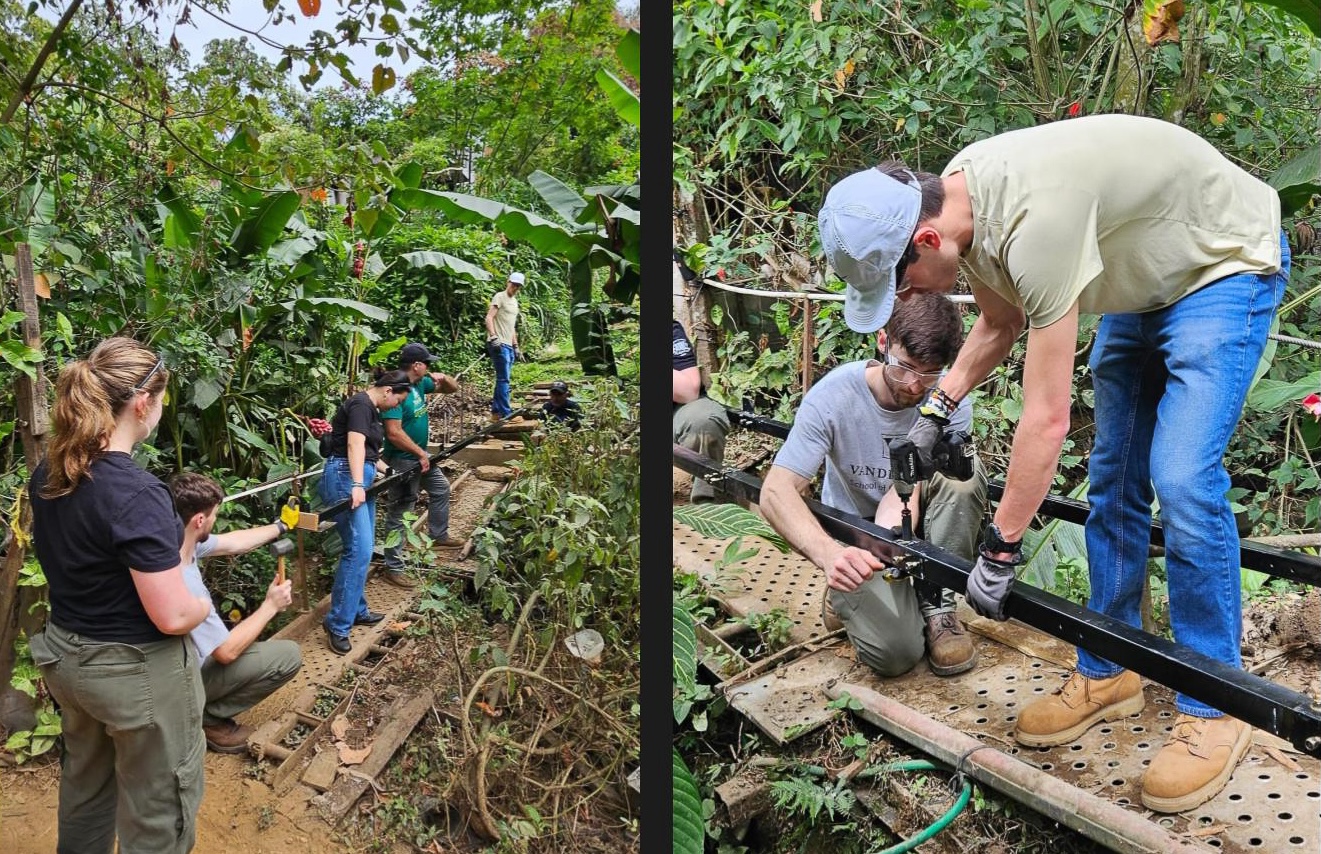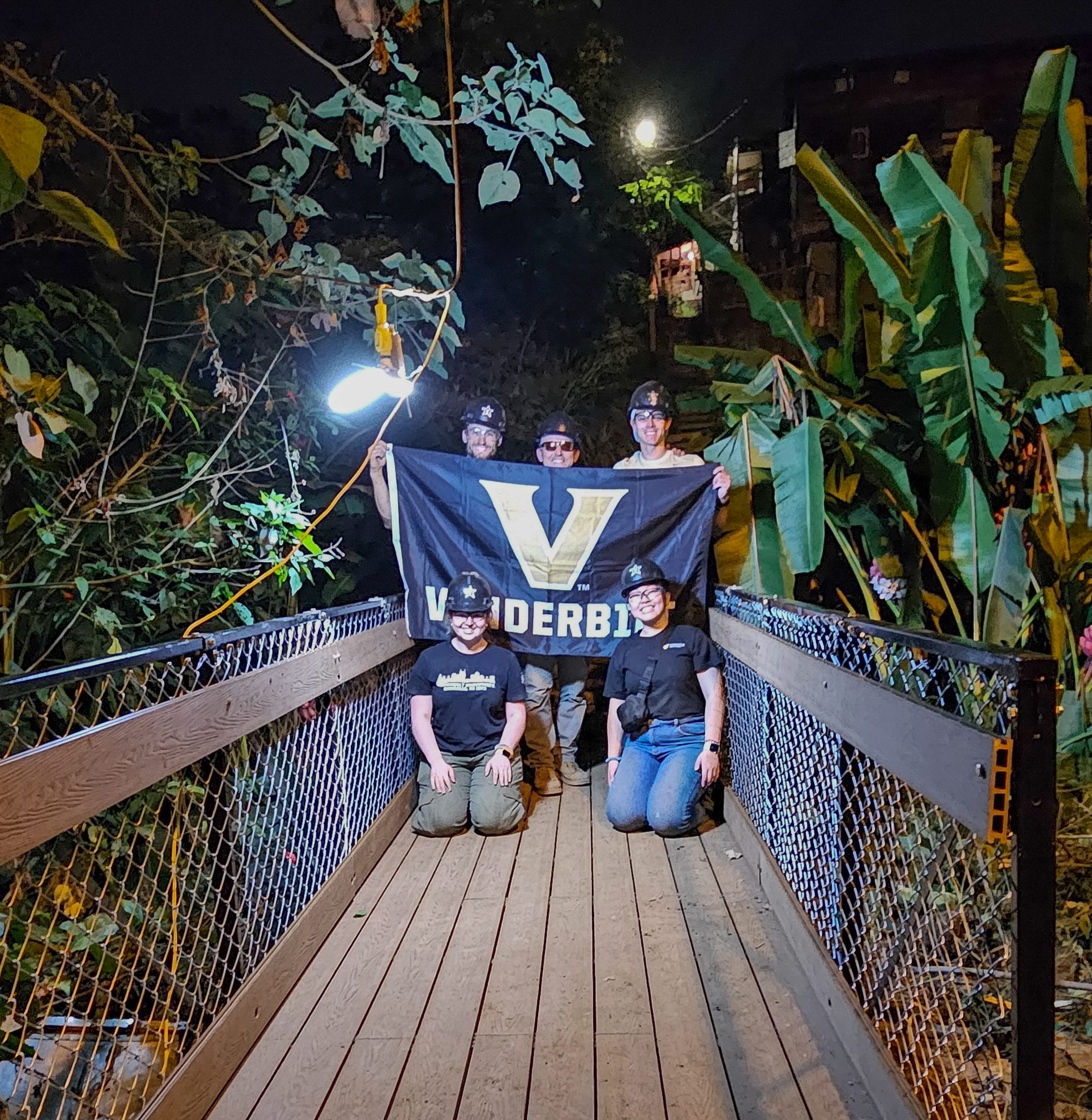By Hayley Britton
Since the beginning of the school year, Vanderbilt civil engineering seniors Logan Glazier, Zachary Hodges, Winnie Huang, and Elise Puliafico were looking forward to going to Costa Rica. Not so much for leisure, but to fulfill a more hands-on objective: construct a pedestrian bridge that would allow a community, separated by a stream, to finally be connected.

The students explained the process, their hours of work, challenges, and culminating success to the American Society of Civil Engineers, Vanderbilt Chapter (ASCE), on April 17.
The multifaceted Senior Design Project required more than just the students’ civil engineering expertise. They also had to handle the funding and logistics of transporting the pieces of the fully functional pedestrian bridge they designed from Nashville, Tennessee, to a small community near San José, Costa Rica. Pieces of the bridge they would put together once in Costa Rica were placed in baggage and checked onto their Southwest flight for their trip, April 12 -15.
Additionally, the bridge had to comply with several specifications, standards and regulations required by agencies like the American Association of State Highway and Transportation Officials (AASHTO) and the Transportation Security Administration (TRA). The team also considered the community implications, carefully designing a structure that would be worthwhile and useful to the people who would be using it.
The project was completed in partnership with Máximo Nivel, a study-abroad and educational travel organization in Latin America.
However, one obstacle during the construction process was the language barrier. Since none of the students spoke much Spanish, and the Máximo Nivel representatives didn’t speak English, communication took place over video calls—often relying on pictures to make sure everyone, both in the U.S. and Costa Rica, understood the plan.
“It created a very interesting dynamic, especially with engineering terms that are not the easiest to translate,” Glazier said. “Early on in our communication, there were a lot of Zoom meetings with whiteboards behind us and pulling up Google photos.”
Once in Costa Rica, the students had an onsite translator who helped them work more smoothly.

“This was the part of senior design projects that you don’t get to see often—the high amount of backend communication that goes on,” Glazier added. “It was honestly the most challenging part that wasn’t related to the direct fabrication or design of the bridge.”
The bridge was designed using SolidWorks software and a modular construction method that made on-site assembly more efficient. The team incorporated hydraulic and seismic components into their design to ensure the structure would be safe and long-lasting. And, by fabricating the modular components at Vanderbilt, they were able to cut down on both costs and installation time.
Once the bridge was constructed, the students’ hard work was well received.
“The entire community is going to be using that bridge on a daily basis,” Glazier said. “It’s really cool to see the impact we’ve had. They told us that people have been promising that they would do something about the bridge for the past several years, and no one’s ever followed through. So, they were really happy and grateful for the work that we put into making this happen.”

At the end of their presentation, the students received a round of applause from the American Society of Civil Engineers, and there were even a few tears shed by proud faculty advisers.